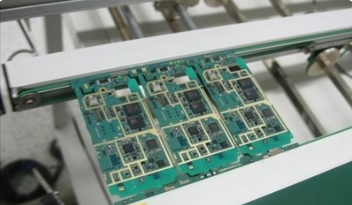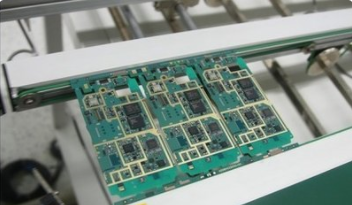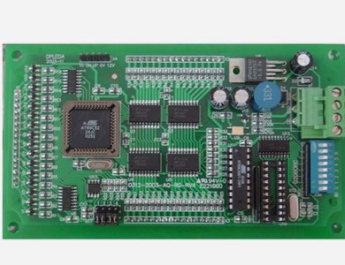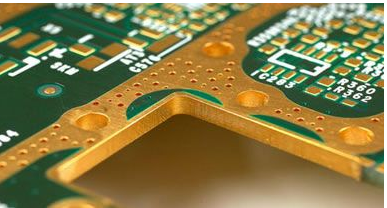
In the process of transferring the inner line pattern from the base material to the outer line pattern after several times of pressing, it will cause different expansion and contraction of the panel in longitude and latitude.
From the whole PCB fabrication FLOW-CHART, we can find out the causes and processes that may cause abnormal board expansion and contraction and poor dimensional consistency:

1. Dimensional stability of the incoming base material, especially the dimensional consistency between each laminated CYCLE of the supplier; Even though the dimensional stability of different CYCLE of the same specification of base materials is within the specification requirements, the poor consistency between them may cause the graphic size of subsequent batch production plates to exceed the tolerance due to the difference between different batches of plates after a reasonable inner layer compensation is determined in the first board trial production; At the same time, there is another material anomaly, which is the shrinkage of the plate found in the process of transferring the outer layer graphics to the contour process; In the production process, it was found that the panel width and the length of the shipping unit of individual batches of panels in the data measurement process before the profile processing had serious shrinkage compared with the transfer ratio of the outer layer graphics, with the ratio reaching 3.6mil/10inch. See the following table for specific data; After tracing, the X-RAY measurement of the abnormal batch of plates after the outer layer lamination and the outer layer graphic transfer ratio are both within the control range, and at present, no good method has been found for monitoring in the process monitoring;
2. Panel assembly design: the panel assembly design of conventional panels is symmetrical design, which has no significant impact on the figure size of finished PCB when the figure transfer ratio is normal; However, some boards use the design of asymmetric structure in order to improve the utilization rate of boards and reduce costs, which will have a significant impact on the consistency of graphic dimensions of finished PCBs in different distribution areas, Even in the process of PCB processing, we can find that the alignment of such unsymmetrically designed boards is more difficult to control and improve than that of conventional boards in the process of laser blind hole drilling and outer graphic transfer exposure/solder resist exposure/character printing;
3. One inner layer graphic transfer process: this process plays a key role in whether the size of finished PCB meets customer requirements; If there is a large deviation in the film magnification compensation provided for an inner layer graphics transfer, it can not only directly cause the finished PCB graphics size to fail to meet the customer's requirements, but also cause the subsequent abnormal alignment between the laser blind hole and its bottom connecting plate, resulting in the insulation performance between the LAYER TO LAYER drops or even a short circuit, as well as the through/blind hole alignment problem during the outer layer graphics transfer;
Based on the above analysis, we can take appropriate measures to monitor and improve the abnormalities;
1. Monitoring of the dimensional stability of the incoming base materials and the dimensional consistency between batches: the dimensional stability of the base materials provided by different suppliers shall be tested regularly to track the difference of the longitudinal and latitudinal data between different batches of plates of the same specification, and statistical techniques can be appropriately used to analyze the test data of the base materials; It can also find out suppliers with relatively stable quality, and provide more detailed supplier selection data for SQE and the procurement department; For the serious expansion and contraction of plates caused by the poor dimensional stability of individual batches of base materials after the transfer of the outer layer graphics, it can only be found through the measurement of the first plate of appearance production or the measurement during the delivery review; However, the latter has higher requirements for batch management, and it is easy to have mixed boards during mass production of a certain number;
2. The design scheme of symmetrical structure shall be adopted in the panel design to keep the expansion and contraction of each shipping unit in the panel relatively consistent; If possible, we should communicate with the customer and suggest that it is allowed to specifically identify the location of each shipping unit in the panel by means of etching/characters on the process edge of the panel; The effect of this method will be more obvious in the unsymmetrical design of the panel. Even if the size of each unit in each panel is out of tolerance due to the asymmetric graphics, and even if the local blind hole bottom connection exception is caused thereby, it is very convenient to identify the abnormal unit and pick it out before shipment, so as not to cause customer packaging exception and cause complaints;
3. Make the first plate of multiplying ratio, and scientifically determine the first inner layer graphic transfer multiplying ratio of the production plate through the first plate; This is particularly important when changing other suppliers' base materials or P sheets to reduce production costs; When it is found that a plate exceeds the control range, it shall be processed according to whether the hole of its unit pipe position is a secondary drilling; If it is a conventional processing process, it can be released to the outer layer for graphic transfer according to the actual situation and adjusted appropriately through the film magnification; If it is a secondary drilling plate, special care shall be taken to handle the abnormal plate to ensure the figure size of the finished plate and the distance from the target to the pipe position hole (secondary drilling); Attached with the collection list of the first plate multiplying power of the secondary laminated plate;
4. Process monitoring: use the target data of the inner layer of the board measured when the PCB outer layer or the secondary outer layer of the board is drilling the pipe position hole in its laminated X-RAY production, analyze whether it is within the control range and compare it with the corresponding data collected by the qualified first board to determine whether there is any abnormal expansion or contraction of the board size. The attached table is for reference; Through theoretical calculation, the multiplying ratio here should be controlled within+/-0.025% to meet the size requirements of conventional plates;
By analyzing the causes of PCB size expansion and contraction, we can find out the available monitoring and improvement methods. We hope that the majority of PCB practitioners can get inspiration from it and find an improvement plan suitable for their own PCB companies based on their own actual conditions







